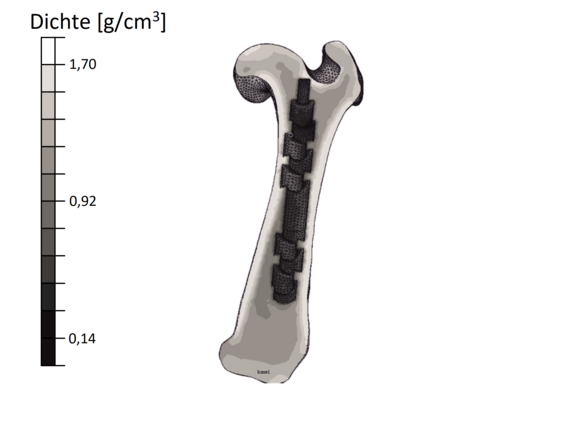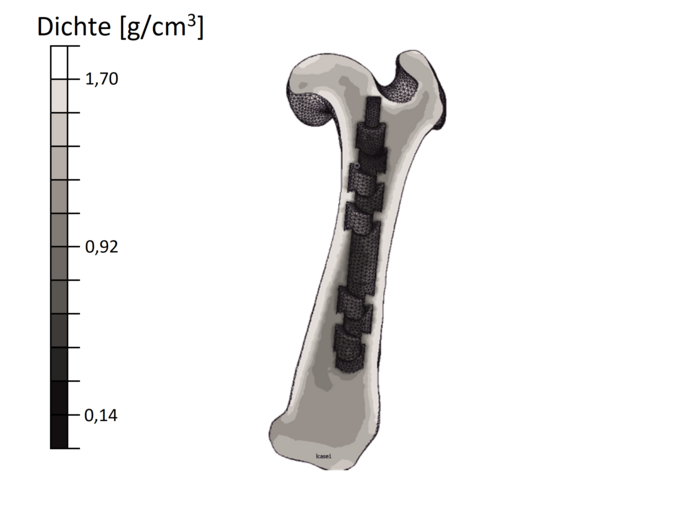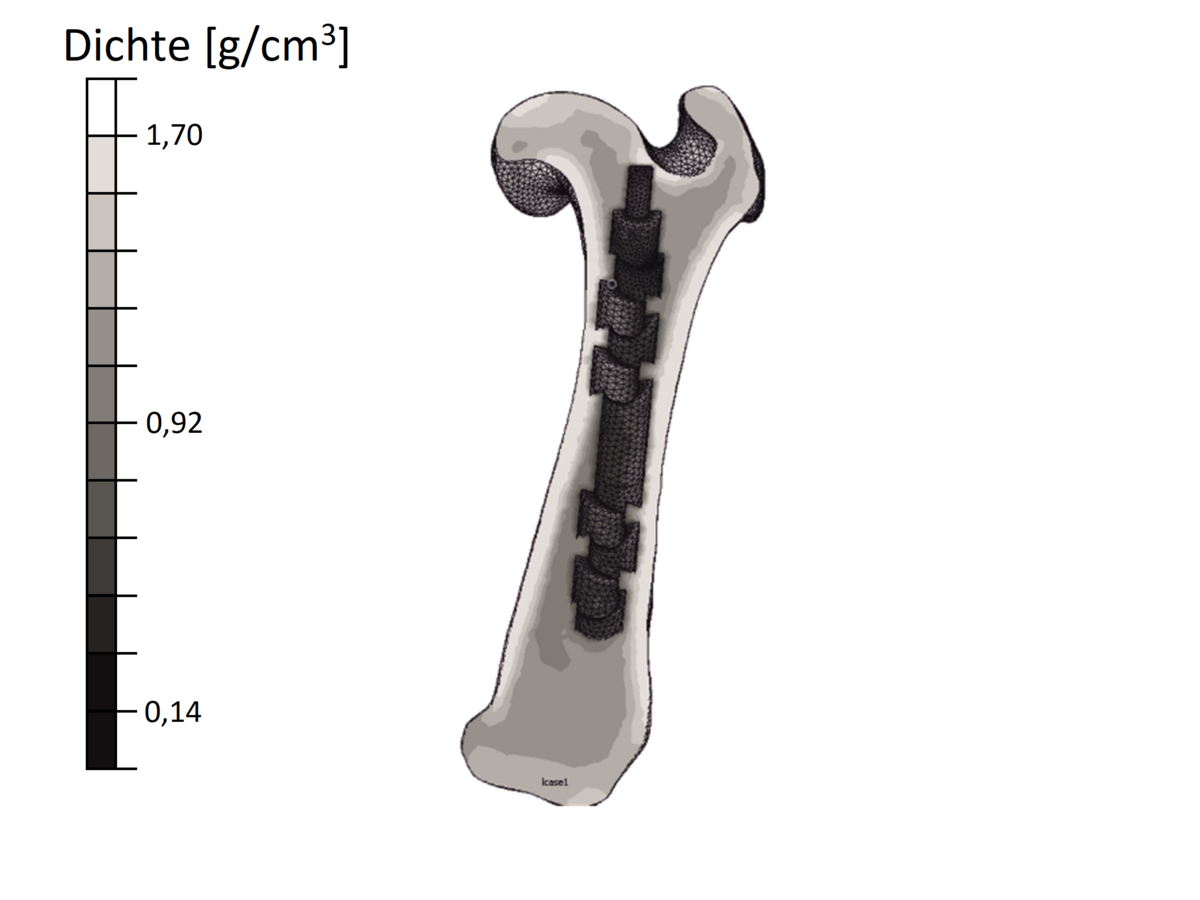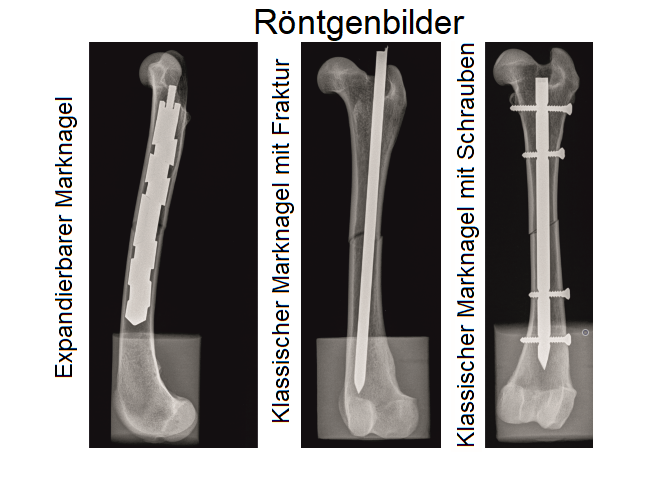Anas Bouguecha, Nelly Weigel, Bernd-Arno Behrens, Christina M. Stukenborg-Colsman,Hazibullah Waizy (2011); BioMedical Engineering Online, Volume: 10, number: 58



Over time, a model has been developed and continuously optimised that can calculate the density and its change in a bone. The change in density provides information about the bone restructuring. The bone is a living tissue that is constantly changing and adapting to the stresses. Thus, its density also adapts. The placement of implants, such as a hip implant, changes the natural loading of the bone. This alteration can cause a change in bone density and stability. Since a negative change in bone stability is not desirable, an attempt is made to prevent this by adjusting the design of the implants.
Publication
In one exemplary project the density change of the tibia and ankle bone after implantation of an ankle replacement was investigated. Firstly, CT scans were used to determine the density distribution before implantation. Based on these results, the ankle joint was virtually replaced by an endoprosthesis. To calculate the load, a force corresponding to a walking patient was assumed. Based on this load, the extent to which the density changes due to the varying mode of action of the load was investigated. It was determined that the tibia had a density loss of 2 % and the talus of 13 %. The greater density loss in the talus is explained by a lower mass in relation to the implant geometry. Overall, it was shown that this model provides suitable values for the investigation of density change of a bone compared to the literature and can be used to better fit implant geometries in the future.

























